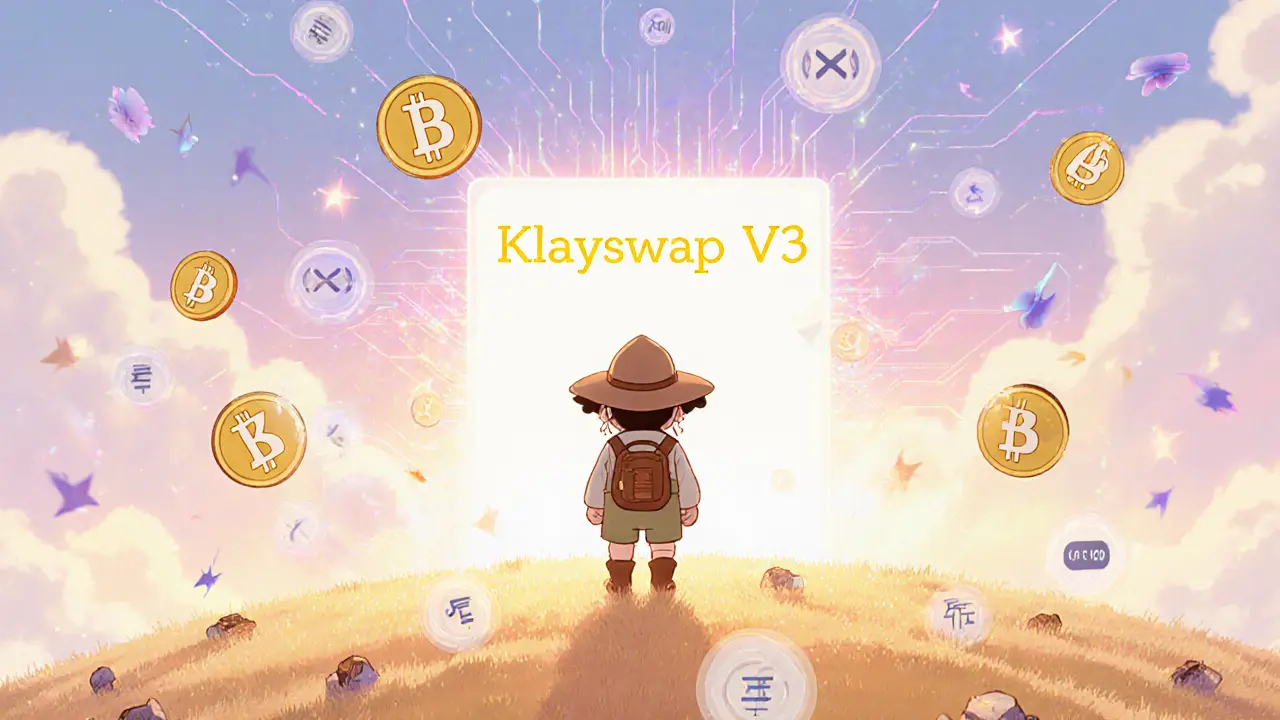Klayswap V3: DEX Overview, AMM Features & Liquidity Tips
When working with Klayswap V3, a decentralized exchange built on the Klaytn blockchain that uses an automated market maker model to enable token swaps and liquidity provision. Also known as KLAYswap V3, it lets users trade KLAY‑based assets with low fees and flexible pool settings.
The platform runs on Klaytn, a public, enterprise‑grade blockchain that prioritizes fast finality and cheap transactions. Klaytn’s high throughput means swap confirmations happen in seconds, which is crucial for an AMM that relies on rapid price updates. In short, Klaytn powers the speed and cost efficiency that make Klayswap V3 attractive to traders.
At its core, Klayswap V3 employs an Automated Market Maker, a smart‑contract algorithm that sets token prices based on pool balances rather than order books. This AMM design eliminates the need for a central order book, allowing anyone to provide liquidity and earn fees instantly. The AMM model also means price slippage rises smoothly as trade size grows, a behavior traders need to understand when planning large swaps.
Liquidity is supplied through Liquidity Pools, smart‑contract vaults where users lock pairs of tokens and receive a share of the transaction fees proportional to their contribution. Pools on Klayswap V3 support single‑side staking, flexible fee tiers, and dynamic range orders, giving providers more control over risk and return. A well‑balanced pool improves market depth, reduces slippage, and boosts overall swap efficiency.
Every swap on the exchange is a Token Swap, the act of exchanging one blockchain asset for another directly through the AMM’s pricing curve. Because swaps settle on‑chain, they inherit Klaytn’s finality guarantees, protecting users from double‑spend attempts. Swap fees are split between liquidity providers and the protocol, creating a continuous incentive loop that fuels pool growth.
Beyond the mechanics, Klayswap V3 offers governance tools that let token holders propose fee adjustments, add new pools, or change reward distributions. Security audits of the smart contracts reinforce trust, while the open‑source nature lets the community inspect code for hidden risks. Together, these features form a robust ecosystem where traders enjoy fast, cheap swaps and providers earn sustainable returns.
Below you’ll find a curated set of articles that break down each of these pieces—confirmation times, airdrop strategies, tax considerations, and token‑specific deep dives. Whether you’re just starting out or looking to fine‑tune your liquidity strategy, the posts give actionable insights that complement the Klayswap V3 landscape.
Klayswap V3 Review: Deep Dive into Klaytn’s DEX
A thorough review of Klayswap V3 covering its low‑fee Klaytn DEX design, single‑asset liquidity, KSP token rewards, performance data, and future roadmap.
